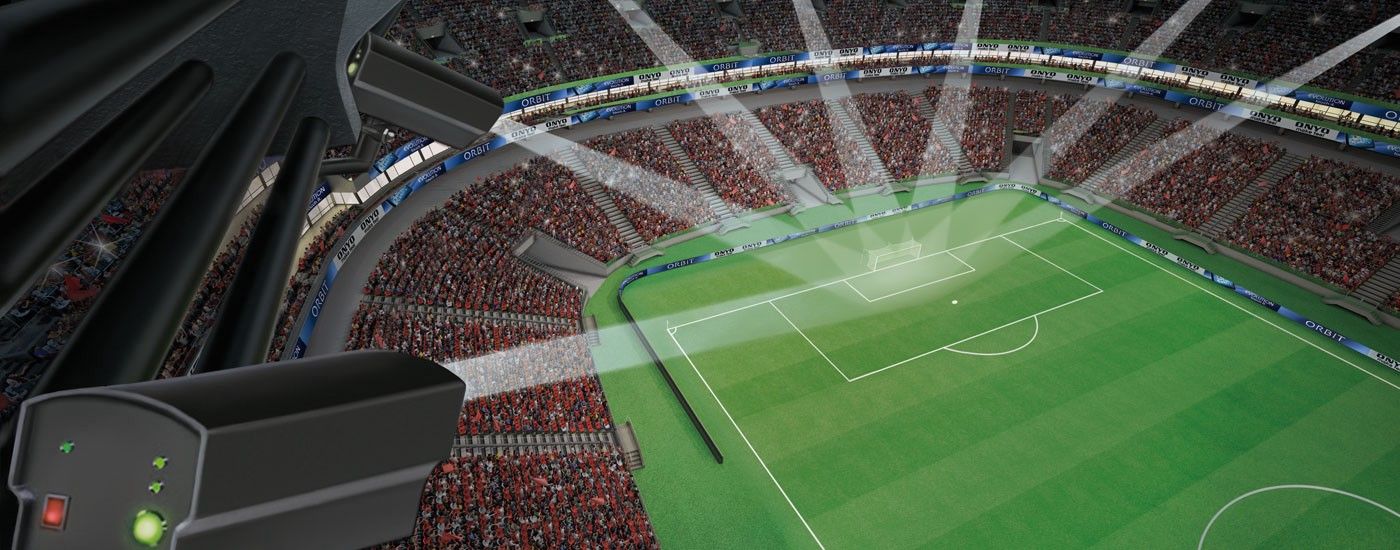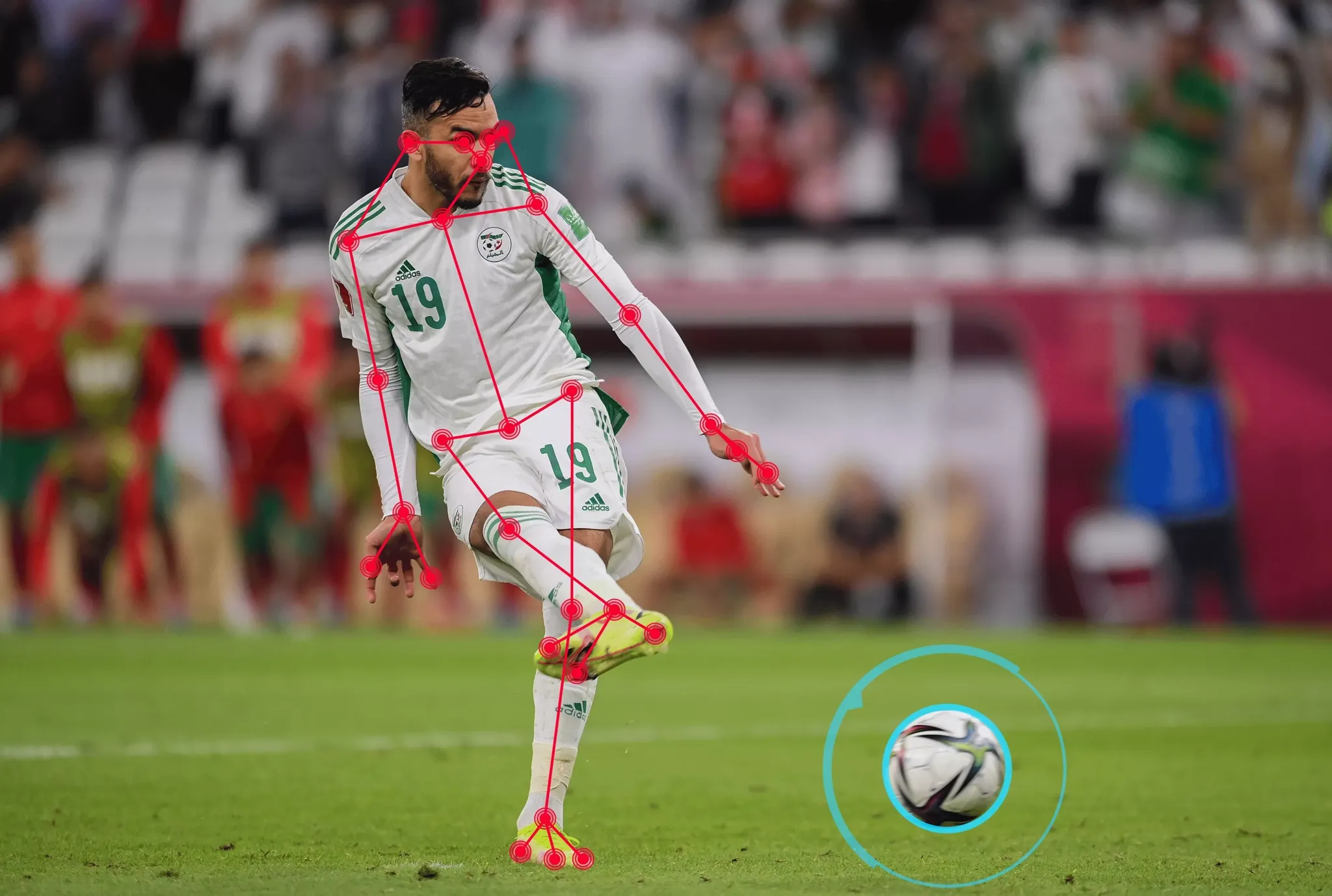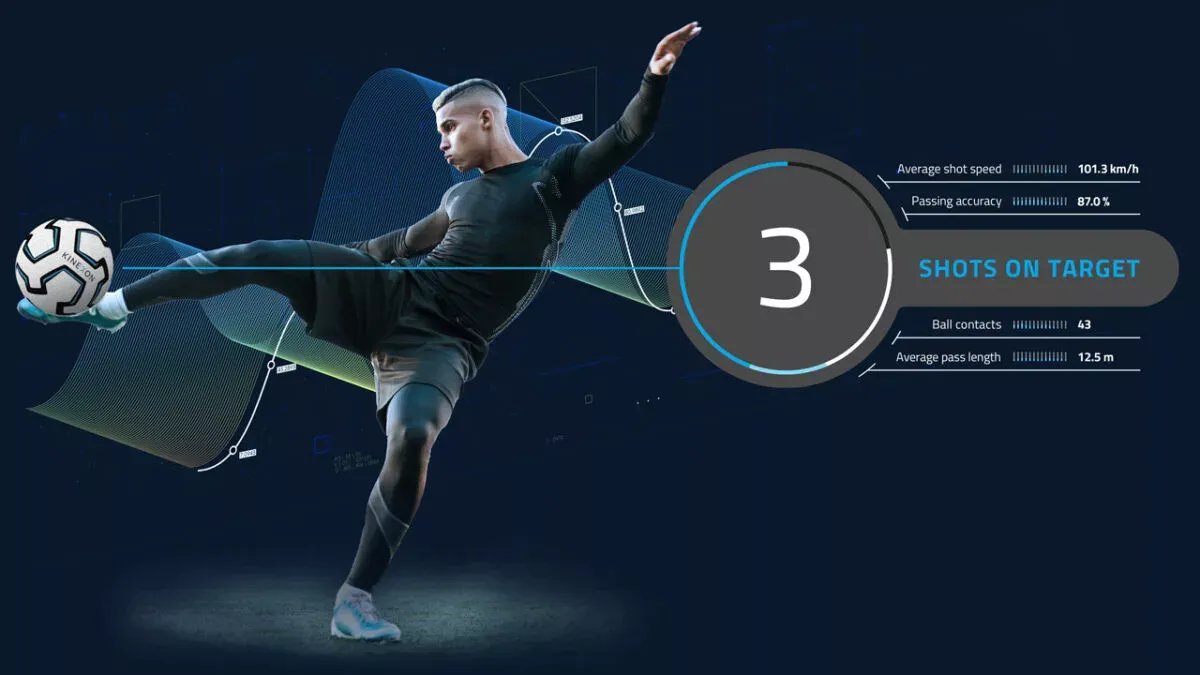Long live football: Hail to wireless sensor tech!


Four years passed, and football is king again! The 2022 World Cup is on for the thrill of billions of fans around the globe. The football World Cup is one of the greatest sports events on the planet and arguably the one with the wider reach! And it gives us a perfect chance to look into how wireless technologies shape up the game and what the future might hold.
Football has for long been the sport of the masses - loved by rich and poor alike, entertaining European elites or the poorest folk in Brazil or Africa in the same fashion. This has certainly fueled the passion for the game and gave origin to the many flavours and mixes nowadays found in this sport - from Brazilian samba to German pragmatism. Many will say that professional football has been taken over by (the wrong side of, in many cases) money and business - hard to argue against that! But for fans, the beauty and excitement of the game are still there when the ball starts rolling on the pitch!
Football has been quite a conservative sport in numerous ways, with many advocating against the use of refereeing technology in the name of holding faithful to the game’s true essence and origins. Such a stance means accepting human errors and subjectivity - considered by those as fundamental condiments of the game’s flow and mystique. Arguably, many emblematic moments like Maradona’s “hand of god” would not survive the filter of technology - but what does that mean in terms of fairness in the game? So, eventually (inevitably, one could say), football officials caved in to the adoption of high-tech!
Other sports have been much faster at adopting technology to assist referees and prevent bad decisions. For instance, cricket has been using the so-called “third umpire” since the early 1990s; it is basically a third match official outside the field who uses video replays to assist the two on-field referees in certain close decisions. Video assistants are probably the earliest and most widely used technology aid in sports. Today’s advanced video systems in sports arenas enable sophisticated replays from several different angles and in super slow motion - all in a very short time and with ultra-high image quality, enabling quick decisions.
Another well-known example is the so-called “hawk eye”, - which uses advanced cameras and computer systems to triangulate images/positions and track the ball’s trajectory. Hawk eye technology was first launched in sports in 2001 by UK-based company Hawk-Eye Innovations, currently owned by Sony. It was initially tested in TV broadcasts of cricket and tennis and first used for officiating in tennis in 2006, namely at the US Open. Currently, it is used in a wide range of sports, including tennis, cricket, rugby, volleyball, badminton, baseball, etc.
So, football got a bit late to the high-tech’s table, but it seems to be catching up pretty quickly. Let’s give a look at what is currently on the menu.
Refereeing technologies in football
The first piece of technology introduced was audio communication systems (earphones and headset microphones) for the refereeing team members to communicate with each other during the game. But this is rather standard audio tech - not necessarily tailor-made for the sport. So, the first advanced tech element tailored to football was goal-line technology.
Goal-line technology consists essentially in a system that allows checking whether the ball has fully crossed the goal line. It is often said that the so-called “ghost goal” by English player Frank Lampard in a 2010 World Cup game against Germany actually marked the point of no return for the adoption of goal-line technology. The technology was implemented in the 2014 World Cup and has taken its place in the game since then. Technically, it can be implemented in different ways: through cameras/imaging systems that continuously track the ball during the game, particularly in the vicinity of the goal/goal-line; through a specific type of hawk eye technology; or using electronic sensors in the ball and close to the goal area. FIFA has licensed four systems: the top contenders are GoalControl and Hawk-Eye, followed by GoalRef and Cairos-Adidas.

GoalControl debuted in the 2014 World Cup and is used in this year’s tournament. It uses fourteen high-speed cameras mounted around the stadium, seven directed to each goal; the cameras can take 500 pictures per second and enable tracing the ball's movement within 5 millimetres of accuracy. The referee receives a wirelessly transmitted signal/alert in his/her watch whenever a goal is scored. Hawk eye goal-line technology is used in major leagues like England’s Premier League. GoalRef is a radio-based sensing system that uses low-frequency magnetic fields: one field is created in the goal area - through an exciter loop that is installed around the goal. The other is created in and around the ball - the inside of the ball is fitted with imperceptible coils that use induction to generate their own magnetic field when they approach the goal area. By measuring and analyzing changes in the magnetic field around the goal, it is possible to determine whether the ball has completely crossed the line. Sensor antennas on top of the goal detect the changes in the magnetic field and send signals to a reader. Finally, the Cairos-Adidas system is also based on magnetic fields. It entails the installation of thin electromagnetic strips in the turf of the penalty area and behind the goal line, together with a sensor suspended inside the ball.
Goal-line technology was the first big step in the use of advanced technology in football. Yet, it represented little disruption in the game. The real revolution came with the introduction of VAR (Video Assistant Referee) - with its grand debut at the 2018 World Cup. The VAR is meant to help assistant referees in reviewing decisions made by the head referee through the use of video footage and replays. As for now, its intervention is limited to four specific (potentially match-changing) game situations - namely goal/no goal; penalties; direct red cards; mistaken identity of players - and the final call is always made by the head referee. In its latest implementation for the 2022 World Cup, the VAR relies on 43 broadcast cameras, eight of which are super slow motion and four of which are ultra slow motion. VAR officials also have access to the goal-line technology signal and to the respective high-speed cameras. In addition, the VAR team has access to the camera feeds used by semi-automated offside technology (see below). The VAR team seats in a dedicated video operating room and consists of four video match officials and three replay operators. Since its introduction in 2018, the VAR system has been implemented in over 100 competitions worldwide.
So, goal-line technology kicked off in 2014, VAR in 2018: what’s being served for this year’s World Cup?
New on the menu
If you’re a fan you’ve seen it in action quite many times in the past couple of weeks: semi-automated offside technology. As the name says, this latest addition to football’s tech stack helps the VAR and the on-field referees with offside calls - shortening the decision time and improving accuracy. It is based on high-tech video cameras and a fancy sensor inside the ball. But let’s get down to the nitty gritty.

First, the camera systems. There are 12 dedicated cameras mounted underneath the roof of the stadium that track the ball and each individual player 50 times per second. This enables calculating their exact position on the pitch at every time. For each player, the cameras collect up to 29 data points, including all limbs and extremities that are relevant for making offside calls.
Second, the ball. Adidas Al Rihla (the official 2022 World Cup ball) is equipped with what Adidas calls “Connected Ball Technology”. It holds a 500Hz inertial measurement unit (IMU) motion sensor that enables the collection of very accurate ball movement data, namely tracking every touch of the game at a rate of 500 times per second. The sensor unit is positioned at the centre of the ball using a new Adidas proprietary suspension system. The sensor has been developed by the german company KINEXON.
KINEXON’s ball tracking technology uses a combination of Ultra Wide Band (UWB) and IMU technologies in a very light (14 grams) sensor unit, meaning that all movements and positions of the ball can be recorded and measured in real-time (latency of only 20 msecs, meaning true real-time for the human eye) with extremely high accuracy (centimetres accuracy provided by UWB). The sensor works with a battery that provides 6 hours of active use in one charge and which can be charged by induction. In addition to the sensor in the ball, KINEXON’s system comprises a so-called Local Positioning System (LPS) which relies on a network of 12 to 24 antennas installed around the field. Processing of data from the system enables the calculation of diverse metrics - such as speed, pass lengths, etc. - and recognition of game events like shots, passes, touches, etc. Besides football, KINEXON’s technology is already used in models of official balls for handball.

By combining data from the ball and players positions and applying artificial intelligence, the new technology provides an automated alert to the VAR officials whenever an offside event is detected. The VAR officials check and validate the proposed decision and communicate to the head referee, who makes the final call. All this process enables much more accurate (data- and technology-driven) and faster decisions. The same data is used to generate the 3D animations shown to the fans on the stadium screens and TV.
Connected Ball Technology has put wireless sensor technology literally at the epicentre of the game! So now that wireless sensors got their place at the table, let’s see what else they can bring.
Wireless sensors join the party
Truth be told, wireless sensors have been there in sports for quite a while now. There are a bunch of companies providing sensors - particularly within wearable devices - for anything from tracking position and movements, to measuring vital signs and to monitoring other health and performance parameters. By now it is very frequent to see football players and other athletes wearing chest vests during matches and training - such vests are designed to hold this type of electronic devices.
KINEXON is one example. Besides ball tracking technology, the company also provides player tracking and athlete monitoring technologies. Player tracking is based on a similar system as used for the ball, relying on UWB technology. The sensor unit - including 3D position tracking, accelerometer, gyroscope and magnetometer sensing - is a wearable device (small pod- or dongle-like device) that fits in clothing, namely between the shoulder blades in a vest or on shorts. The unit is powered by a battery - providing up to 4 hours runtime and charged in one hour. Data communication and infrastructure is similar to ball tracking, using KINEXON’s LPS and software tools. This is a quite fancy system that can give precise data and advanced analytics for professional clubs and athletes - providing key performance metrics around e.g. accelerations, changes of direction, speed, metabolic power, etc. during training sessions and competition. Besides football, it can serve many other sports like basketball, handball, hockey, American football, etc.
Other companies have somewhat similar offers - some more into professionals, others targeting amateurs and enthusiasts. For instance, Zepp Labs offers a performance tracking system based on a sensor unit (small pod: 38 x 27.2 x 7.2 mm) that fits in a specific pocket at the rear of the player’s calf sleeve. The sensor unit holds accelerometer and gyroscope capabilities and communicates through Bluetooth e.g. with a mobile device. It is powered by a rechargeable battery that provides 4 hours of game tracking. Zepp has variations of the system for other sports, namely baseball, golf, tennis and softball - where a similar sensor unit is placed differently, e.g. on the racquet or on the bat.
Catapult One is another example. Their sensor unit/pod is placed in a vest and works with a particular GPS technology, recording 10 position data points per second for tracking speed, distance, load and intensity metrics, etc. Besides football, Catapult’s solution can support a whole lot of other sports, including rugby, hockey, tennis, American football, lacrosse, cricket, etc.
Looking a bit beyond football we find some specialized players within wearables and clothing for diverse sports and fitness. For instance, Komodo Technologies provides sensors for health data - including electrocardiogram (ECG), heart rate variability and oxygen saturation (SpO2) - through a smart device that is clipped under the fabrics of a special sleeve. It also has an accelerometer and supports Bluetooth connectivity. It is meant for sports and fitness, as well as for healthcare uses. Ambiotex also provides ECG sensing, in this case through a specially designed shirt - made of high-tech fabrics and a sensor unit magnetically attached to the shirt. Wearable X commercializes the Nadi X smart pants for yoga. The smart pants integrate sensors and haptic feedback (vibrations), guiding the user through gentle vibrations. Connectivity to an app provides further feedback and audio cues. The pants work with what they call a pulse device - a small pod that clips to the back of the pants (behind the left knee) providing power (battery) and Bluetooth connectivity. Athos has developed smart clothing for sports and fitness with sensors to track muscle activity using electromyography technology. Sensors are embedded in the garments, namely in shirts, shorts and pants. As with the others, they have an electronic device that clips into the clothing - embedding an accelerometer, providing power (battery) and connectivity. Sensoria offers diverse smart garments (shirts, sports bras, socks, etc.) for fitness embedding pressure sensors and heart rate monitoring capabilities. Again, the setup is similar to the ones above, with a core electronic device that clips into the garments providing power, connectivity, etc.
Besides, some of the largest sportswear companies in the globe also have their own smart clothing and footwear initiatives. We have already mentioned Adidas with their smart ball technology. They have several other initiatives, for instance their MiCoach platform (which seems to have been discontinued) or their collaboration with Google’s project Jacquard. Nike has had some products in this space too - such as the Nike+ sensor or their self-lacing shoes. As did Under Armour with the Healthbox program, shelved in 2020.
Wrapping up, a couple of elements are common to all wearable sensor technologies described above, which we believe reflect the current state of the art. First, all solutions rely on some kind of sensor unit/pod that clips on to the garments, and second, all such units are powered by a battery. These are clearly points for improvement!
What is the future holding?
At ONiO we are looking into the next-gen wearables and smart clothing - no batteries, no intruding electronic casings/pods, all comfort! We imagine a future where multiple ultra-thin, compact sensor units can be simply embedded into clothing and footwear and used seamlessly without changing the way we use clothes today - i.e. standing wash and dry cycles and with no need for charging or changing batteries. Our batteryless technology, namely ONiO.zero, is a giant step into such a future. Removing the battery removes the need for charging or replacing it. Notably, removing the battery also allows for a much more compact electronic design - so there is no more need for pods or dongles or special chest vests! ONiO.zero has an unprecedented level of on-chip integration, tailored for energy harvesting applications - which further feeds into compactness and cost-effectiveness.
If we think about a sport like football, we can envision the players using all kinds of tiny sensors embedded in shirts, shorts, socks, shoes or even on skin patches. These can be some of the sensors already used today - yet smaller, less intrusive, cheaper and completely self-powered! - and others developed in the future to track and improve health and performance. There will also be a place for sensors in the ball, goal posts, pitch, stands, etc. - all of which can be deployed in an easy and inexpensive manner - no wires, no batteries, no maintenance! So, no more bizarre pictures of match balls being charged!
Football lagged a bit behind other sports in the adoption of high-tech, but seems now at a good pace. Goal-line technology, VAR, semi-automated offside technology, wearable sensors… what’s next? As we’ve pointed out, batteryless wireless sensors still have a lot to give to the game - in terms of performance, fairness as well as the fans' experience. And their combination with other emerging technologies, such as Artificial Intelligence and Virtual/Augmented Reality might open new dimensions within the game.
As for the present, let’s enjoy the World Cup and let football be king!











